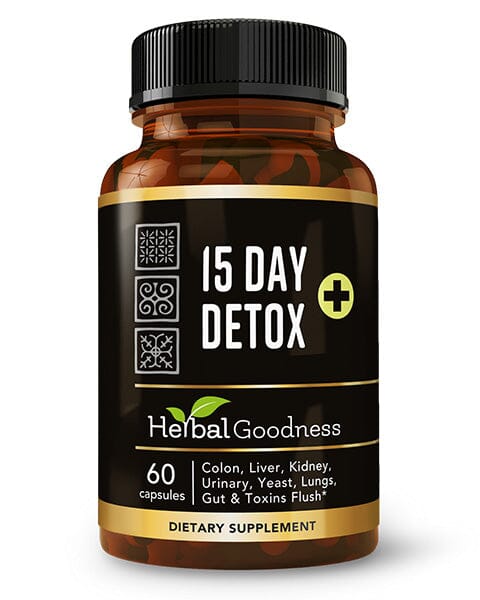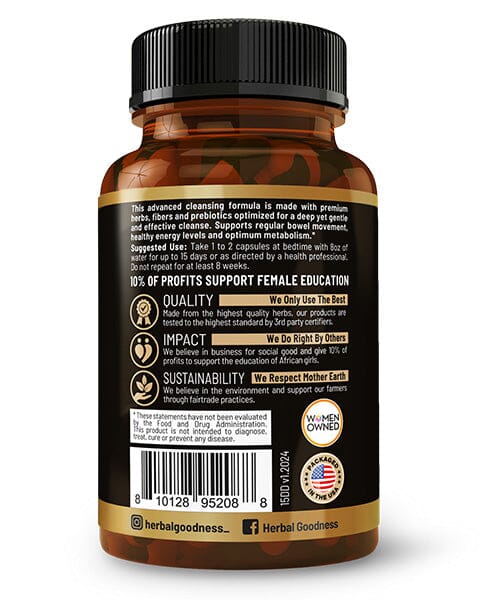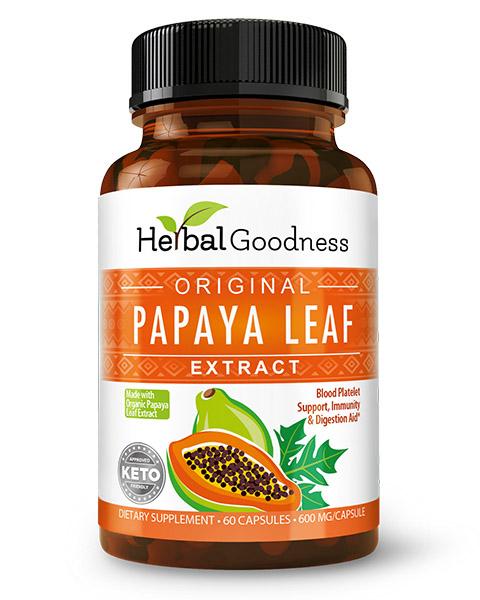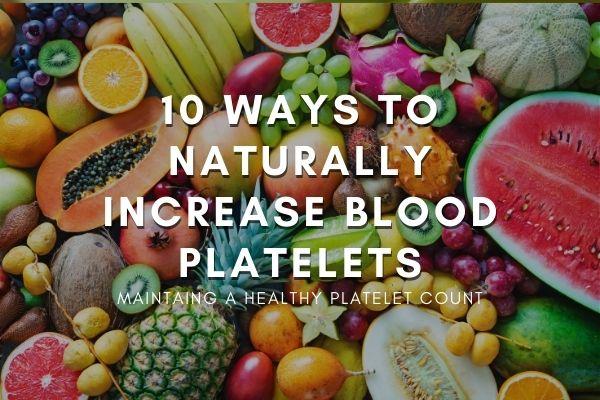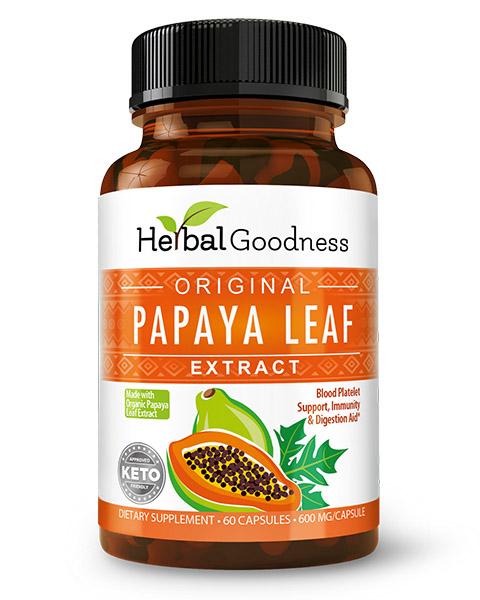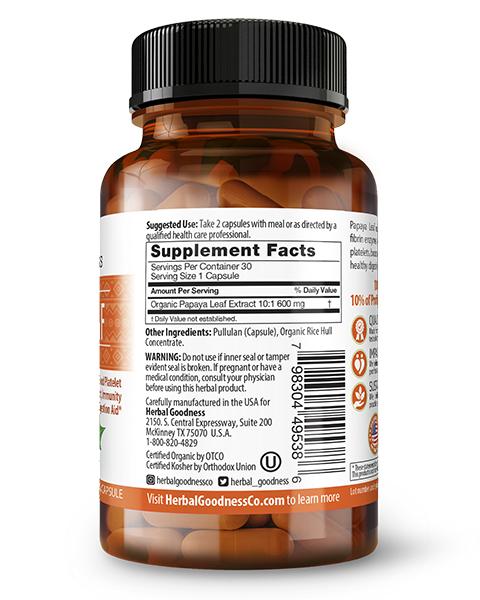Papaya - Fruit Of The Angels | Herbal Goodness
 Deliciously sweet with musky undertones and a soft, butter-like consistency, it is no wonder the papaya was reputably called the "Fruit Of The Angels".
Deliciously sweet with musky undertones and a soft, butter-like consistency, it is no wonder the papaya was reputably called the "Fruit Of The Angels".
Organic Papayas - The Non-GMO Poster Child
Papayas are one of the healthiest, most delicious fruits out there. They have a variety of nutrients for your skin and immune system, they're full of enzymes that aid digestion and reduce bloating, and they maintain healthy blood pressure levels. Papayas truly are a dream! Their sweet, tropical taste is also great whether you eat them alone, make a smoothie, use them for fruit-based salsa, make a papaya boat salad, or even squeeze some lemon on them and just enjoy.
Unfortunately, as you might have already heard, papaya was the first fruit to be genetically modified for human consumption in the 1970's, due to a virus disease that almost wiped them out in Hawaii. Papaya also makes the top 10 genetically modified foods to avoid, since GMO papayas are prevalent in the U.S. This means that unless you know what to look out for at the store, it can be tricky to find a papaya that’s free of GMOs. Most likely, if a papaya is not labeled organic or GMO-free (most aren’t), it is a GMO papaya.
GMOs are genetically modified organisms that are produced in a lab by taking the gene of one species and inserting it into another to obtain a desired trait or characteristic. The end result creates transgenic organisms that are unnatural. Not enough research has been done over time for us to fully understand the long-term effects of GMOs and our health. All we know is that research has shown that it's smart to avoid GMOs, because we’re not able to tell exactly how they’re produced or what they may mean for our health before consuming them.
GMO varieties of papaya include the Rainbow and hybrids made with the Rainbow Papaya such as Sun Up Strawberry, and Sunrise. The non-GMO species include Tauning, Pink Lady, Mexican Red or Caribbean Red Maradol, Royal Star, Singapore Pink, and the Higgins variety.
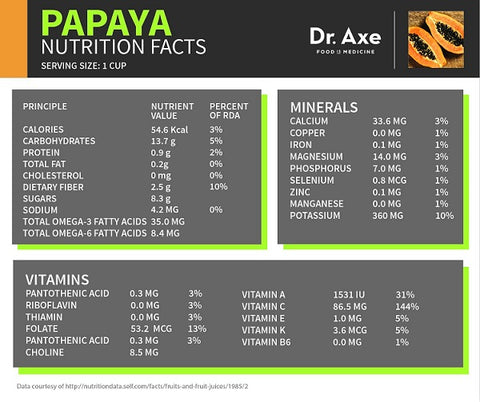
More About Papaya
- Papayas are spherical or pear-shaped fruits that can be as long as 20 inches. The ones commonly found in the market usually average about 7 inches and weigh about one pound.
- Their flesh is a rich orange color with either yellow or pink hues.
- Inside the inner cavity of the fruit are black, round seeds encased in a gelatinous-like substance. Papaya seeds are edible, although their peppery flavor is somewhat bitter.
- The fruit, as well as the other parts of the papaya tree, contain papain, an enzyme that helps digest proteins. This enzyme is especially concentrated in the fruit when it is unripe.
- Papain is extracted to make digestive enzyme dietary supplements and is also used as an ingredient in some chewing gums.
1.00 each (304.00 grams)
This chart graphically details the %DV that a serving of papaya provides for each of the nutrients of which it is a good, very good, or excellent source according to our Food Rating System. Additional information about the amount of these nutrients provided by Papaya can be found in the Food Rating System Chart.
Comparative Nutritional Analysis
Marvel at the superior nutrients found in Papaya and its sister super fruit Graviola Source: http://nutritiondata.self.com/facts/
|
1oz Drink/Fruit |
Calories |
Vitamin C |
Potassium |
Omega-6 |
Dietary Fiber |
Folate |
|
Graviola Fruit |
18.5 |
5.8mg (10%) |
77.8g (2%) |
19.3mg |
.9g (4%) |
3.9mcg (1%) |
|
Coconut Water |
5.3 |
0.7mg (1%) |
70mg(2%) |
0.6mg |
.3g (1%) |
0.8mcg (0%) |
|
Acai |
22.7 |
13.6 (23%) |
0 (no electrolytes) |
- |
.3g (1%) |
- |
|
Pomegranate |
15.1 |
- |
59.9 (2%) |
14mg |
|
6.7mcg (2%) |
|
Banana Fruit |
24.9 |
2.4mg (4%) |
100mg (3%) |
12.9mg |
.7g (3%) |
5.6mcg (1%) |
|
Guava Nectar |
16 |
5.5mg (9%) |
10.6mg (0%) |
- |
.3g(1%) |
0.8mcg |
|
Papaya Fruit |
10.9 |
17.3mg (29%) |
72mg(2%) |
1.7mg |
.5g (2%) |
10.6 (3%) |
|
Black Berry |
10.6 |
3.2 (5%) |
37.8 (1%) |
64.1mg |
- |
2.8mcg (1%) |
- Papayas offer not only the luscious taste and sunlit color of the tropics, but they also have a variety of nutrients in them.
- Together, these nutrients promote a healthy life and help fight free radicals. In addition, papaya contains the digestive enzyme, papain, which is similar to bromelain, a digestive enzyme found in pineapple.
- Papayas aid in converting a substance called homocysteine into benign amino acids such as cysteine or methionine. If unconverted, homocysteine may directly damage blood vessel walls.
Immune Support
Papayas boost daily immunity through their variety of nutrients.
Papayas, native to Central America, have been long revered by the Latin American Indians. Spanish and Portuguese explorers brought papayas to many other subtropical lands to which they journeyed including India, the Philippines, and parts of Africa.
This revered tropical fruit was reputably called "the fruit of the angels" by Christopher Columbus. In the 20th century, papayas were brought to the United States and have been cultivated in Hawaii, the major U.S. producer since the 1920s. Today, the largest commercial producers of papayas include the United States, Mexico and Puerto Rico.
For the Most Nutrients, Eat Papaya Fully Ripened
Research conducted at the University of Innsbruck in Austria suggests that as fruits fully ripen, almost to the point of spoilage, their nutrient levels actually increase.
Key to the process is the change in color that occurs as fruits ripen, a similar process to that seen in the fall when leaves turn from green to red to yellow to brown. This color change is caused by the breakdown and disappearance of chlorophyll, which gives leaves and fruits their green color.
How to Select and Store
- If you want to eat them within a day of purchase, choose papayas that have reddish-orange skin and are slightly soft to the touch. Those that have patches of yellow color will take a few more days to ripen.
- Papayas that are totally green or overly hard should not be purchased, unless you are planning on cooking them, or unless you want to use green papayas in a cold dish like an Asian salad, as their flesh will not develop its characteristic sweet juicy flavor.
- While a few black spots on the surface will not affect the papaya's taste, avoid those that are bruised or overly soft. Papayas are more available during the summer and fall; however, you can usually purchase them throughout the year.
- Papayas that are partially yellow should be left at room temperature where they will ripen in a few days. If you want to speed up this process, place them in a paper bag with a banana. Ripe papayas should be stored in the refrigerator and consumed within one or two days, so you can enjoy their maximum flavor.
Tips for Preparing and Cooking
- Papayas can be used many different ways. They can be eaten as is, added to a fruit salad or to a host of different recipes.
- One of the easiest (and most delightful) ways to eat papaya is to eat it just like a melon. After washing the fruit, cut it lengthwise, scoop out the seeds and then eat it with a spoon. For a little extra zest, you can squeeze lemon or lime juice on top.
- To cut papaya into smaller pieces for fruit salad or recipes, first peel it with a paring knife and then cut into desire size and shape. You can also use a melon baller to scoop out the fruit of a halved papaya. If you are adding it to a fruit salad, you should do so just before serving as it tends to cause the other fruits to become very soft.
- While most people discard the big black seeds, they are actually edible and have a delightful peppery flavor. They can be chewed whole or blended into a creamy salad dressing, giving it a peppery flavor.
A Few Quick Serving Ideas
- Mix diced papaya, cilantro, jalapeno peppers and ginger together to make a unique salsa that goes great with shrimp, scallops and halibut.
- Sprinkle papaya with fresh lime juice and enjoy as is.
- Slice a small papaya lengthwise and fill with fruit salad.
- In a blender, combine papaya, strawberries and yogurt for a cold soup treat.
Papayas and Latex Allergy
Like avocados and bananas, papayas contain substances called chitinases that are associated with the latex-fruit allergy syndrome. There is strong evidence of the cross-reaction between latex and these foods. If you have a latex allergy, you may very likely be allergic to these foods as well. Processing the fruit with ethylene gas increases these enzymes; organic produce not treated with gas will have fewer allergy-causing compounds. In addition, cooking the food may deactivate the enzymes.
In-Depth Nutritional Profile for Papaya
| Papaya 1.00 each | 304.00 grams | 118.56 calories |
||||
| Nutrient | Amount | DV (%) |
Nutrient Density |
World's Healthiest Foods Rating |
|---|---|---|---|---|
| vitamin C | 187.87 mg | 313.1 | 47.5 | excellent |
| vitamin A | 3325.76 IU | 66.5 | 10.1 | excellent |
| folate | 115.52 mcg | 28.9 | 4.4 | very good |
| potassium | 781.28 mg | 22.3 | 3.4 | very good |
| fiber | 5.47 g | 21.9 | 3.3 | good |
| vitamin E | 2.22 mg | 11.1 | 1.7 | good |
| vitamin K | 7.90 mcg | 9.9 | 1.5 | good |
| World's Healthiest Foods Rating |
Rule |
|---|---|
| excellent | DV>=75% OR Density>=7.6 AND DV>=10% |
| very good | DV>=50% OR Density>=3.4 AND DV>=5% |
| good | DV>=25% OR Density>=1.5 AND DV>=2.5% |




